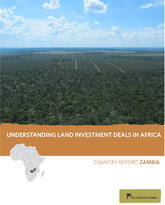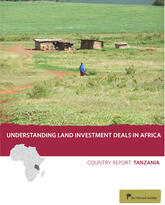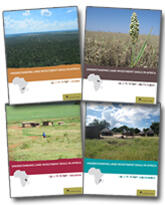Published: 06 Feb 2012
Posted in: UK
Financial News | 6 February 2012
by William Hutchings
If it is not too cold, it is too hot; or it is too wet, or too dry – and anyway the price of fuel has gone up. British farmers are always finding something to complain about.
This quaint (or irritating) habit reflects quite accurately the risky nature of owning a farm, which can be wiped out by drought, disease or the rising cost of fertiliser.
Yet farming is a sector that Insight Investment, a UK asset manager best known for its expertise in investing in corporate bonds and government debt, has begun to target.
As unusual as that may seem, Insight’s move is consistent with its approach to business, according to Abdallah Nauphals, the company’s chief executive. Nauphal said: “Farmland makes a lot of sense for our clients and will be a growing investment for them. When we looked around, there seemed to be a real shortage of quality offering in this space. We are keen to offer solutions to our clients’ needs, and this is a growing market with few competitors, so it is a good business for Insight.”
The general investment idea is to buy farms anywhere in the world and invest more capital improving them, by buying adjacent farmland, or by improving irrigation, or by spending $200,000 to buy a tractor that can work hundreds of hectares. Insight expects farms will generate an interesting income yield while being held, with the improvements increasing their capital value.
Fertile grounds?
The underlying rationale for Insight is clear: farmland is a finite resource, and global demand for agricultural products is increasing because of human population growth. Yet farming is often still inefficient. Romania, where collective farms were broken up after the end of the Ceaucescu regime in 1990, leaving many smallholdings, is a case in point. The result has been fragmented ownership of land, with huge tracts left uncultivated, and matters made worse by inefficient farming methods.
But while there is undeniably upside potential in farming, the road to agricultural riches is full of potholes. Charles Whitaker, a founding partner of Brown & Co, a UK agricultural business consultant, said: “Investors have to be careful. In the 1970s, institutions in the UK put 5% to 7% of their assets into farmland and did well, until it backfired. Some investments were spectacularly unsuccessful.”
And there is a much more recent example of the risks involved. Whitaker said: “There was a bubble in 2007/08 after a significant spike in [soft] commodity prices, brought about by demand for biofuel, a severe drought and a lot of money looking for a home. Then the recession hit and the bubble burst. Investors ran away, harvests were better and demand for biofuel fell.”
Possibilities, possibilities
Whitaker, however, acknowledges that the sector has possibilities. Last year, he said, 100,000 hectares of arable land became available in Russia that had not been farmed for 40 years. The price of Russian land is $600 to $1,000 a hectare, he said, compared with $30,000 in the UK. He said: “As long as you don’t get carried away by the investment rationale, and buy land regardless of the price and the circumstances, it’s not a daft investment. You do, however, need a lot of skills and experience to do it.”
Reza Vishkai, managing director of alternative investments at Insight, said the company had built up a team to manage the farming investments, hiring staff with expertise and experience over the past two years. He said: “We have hired a team of farmers, basically.”
The team includes David Connelly, former chief operating officer of AA Co, the Australian agricultural company that owns about 1% of the landmass of Australia; and Martin Davies, former head of operations for the Co-op, once the largest corporate farming groups in the UK.
Douglas Hart, president of Hart Consultants, a US firm of management consultants that has specialised in the agricultural industry for almost 25 years, has seen funds being set up in the US over the last decade, focusing especially on South America. Like Whitaker at Brown & Co, Hart too urges caution. “Investing in farming is fraught with issues,” he said.
Then there is the politics
Alongside the vagaries of weather, commodity prices and disease, there is also politics, Hart said. In Bolivia or Columbia, for example, there may be a heightened risk of expropriation, or the tax rate might be increased from 10% to 40% by government diktat. Foreign ownership can hold special risks, as evidenced by Brazil’s government debating the introduction of restrictions on foreign ownership this month.
Hart said: “Some countries are not all that keen [to have foreign investors buying farms], they have individuals who’ve owned farms for 400 years. Think of the UK – there would be uproar in the House of Commons.”
Vishkai said much of risk could be moderated through geographic and product diversification. Farms in different countries hedge the investor from much political risk, and from disease and drought, he said, adding: “Even on a local farm level, farmers diversify their crops.”
The rising cost of farmland in the UK and US, and stories of China snapping up agricultural land in Africa, may suggest that this trend has been spotted, and that Insight is too late. Moreover, there are many farming and agricultural companies replete with the capital and expertise needed. But Vishkai believes there are still opportunities.
Vishkai said: “Farmland globally is worth about $6 trillion, and the annual turnover of land ranges from 0.5%, as in the UK, to 2.5% in more active markets.
“There is a trend of farms consolidating, and an inter-generational change – the average age of the farmer is increasing, the children don’t want to continue with the business. So the industry is undergoing a lot of change. It also needs a lot of capital, there has been significant underinvestment, and some of that capital is going to come from institutional investors.”
by William Hutchings
If it is not too cold, it is too hot; or it is too wet, or too dry – and anyway the price of fuel has gone up. British farmers are always finding something to complain about.
This quaint (or irritating) habit reflects quite accurately the risky nature of owning a farm, which can be wiped out by drought, disease or the rising cost of fertiliser.
Yet farming is a sector that Insight Investment, a UK asset manager best known for its expertise in investing in corporate bonds and government debt, has begun to target.
As unusual as that may seem, Insight’s move is consistent with its approach to business, according to Abdallah Nauphals, the company’s chief executive. Nauphal said: “Farmland makes a lot of sense for our clients and will be a growing investment for them. When we looked around, there seemed to be a real shortage of quality offering in this space. We are keen to offer solutions to our clients’ needs, and this is a growing market with few competitors, so it is a good business for Insight.”
The general investment idea is to buy farms anywhere in the world and invest more capital improving them, by buying adjacent farmland, or by improving irrigation, or by spending $200,000 to buy a tractor that can work hundreds of hectares. Insight expects farms will generate an interesting income yield while being held, with the improvements increasing their capital value.
Fertile grounds?
The underlying rationale for Insight is clear: farmland is a finite resource, and global demand for agricultural products is increasing because of human population growth. Yet farming is often still inefficient. Romania, where collective farms were broken up after the end of the Ceaucescu regime in 1990, leaving many smallholdings, is a case in point. The result has been fragmented ownership of land, with huge tracts left uncultivated, and matters made worse by inefficient farming methods.
But while there is undeniably upside potential in farming, the road to agricultural riches is full of potholes. Charles Whitaker, a founding partner of Brown & Co, a UK agricultural business consultant, said: “Investors have to be careful. In the 1970s, institutions in the UK put 5% to 7% of their assets into farmland and did well, until it backfired. Some investments were spectacularly unsuccessful.”
And there is a much more recent example of the risks involved. Whitaker said: “There was a bubble in 2007/08 after a significant spike in [soft] commodity prices, brought about by demand for biofuel, a severe drought and a lot of money looking for a home. Then the recession hit and the bubble burst. Investors ran away, harvests were better and demand for biofuel fell.”
Possibilities, possibilities
Whitaker, however, acknowledges that the sector has possibilities. Last year, he said, 100,000 hectares of arable land became available in Russia that had not been farmed for 40 years. The price of Russian land is $600 to $1,000 a hectare, he said, compared with $30,000 in the UK. He said: “As long as you don’t get carried away by the investment rationale, and buy land regardless of the price and the circumstances, it’s not a daft investment. You do, however, need a lot of skills and experience to do it.”
Reza Vishkai, managing director of alternative investments at Insight, said the company had built up a team to manage the farming investments, hiring staff with expertise and experience over the past two years. He said: “We have hired a team of farmers, basically.”
The team includes David Connelly, former chief operating officer of AA Co, the Australian agricultural company that owns about 1% of the landmass of Australia; and Martin Davies, former head of operations for the Co-op, once the largest corporate farming groups in the UK.
Douglas Hart, president of Hart Consultants, a US firm of management consultants that has specialised in the agricultural industry for almost 25 years, has seen funds being set up in the US over the last decade, focusing especially on South America. Like Whitaker at Brown & Co, Hart too urges caution. “Investing in farming is fraught with issues,” he said.
Then there is the politics
Alongside the vagaries of weather, commodity prices and disease, there is also politics, Hart said. In Bolivia or Columbia, for example, there may be a heightened risk of expropriation, or the tax rate might be increased from 10% to 40% by government diktat. Foreign ownership can hold special risks, as evidenced by Brazil’s government debating the introduction of restrictions on foreign ownership this month.
Hart said: “Some countries are not all that keen [to have foreign investors buying farms], they have individuals who’ve owned farms for 400 years. Think of the UK – there would be uproar in the House of Commons.”
Vishkai said much of risk could be moderated through geographic and product diversification. Farms in different countries hedge the investor from much political risk, and from disease and drought, he said, adding: “Even on a local farm level, farmers diversify their crops.”
The rising cost of farmland in the UK and US, and stories of China snapping up agricultural land in Africa, may suggest that this trend has been spotted, and that Insight is too late. Moreover, there are many farming and agricultural companies replete with the capital and expertise needed. But Vishkai believes there are still opportunities.
Vishkai said: “Farmland globally is worth about $6 trillion, and the annual turnover of land ranges from 0.5%, as in the UK, to 2.5% in more active markets.
“There is a trend of farms consolidating, and an inter-generational change – the average age of the farmer is increasing, the children don’t want to continue with the business. So the industry is undergoing a lot of change. It also needs a lot of capital, there has been significant underinvestment, and some of that capital is going to come from institutional investors.”
Source: Financial News













Nenhum comentário:
Postar um comentário